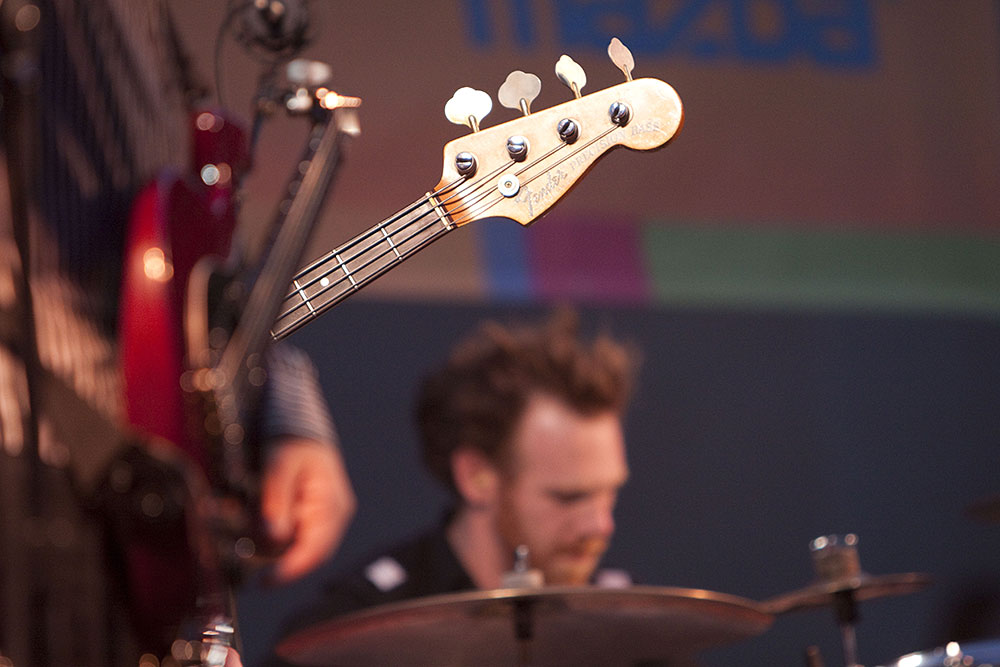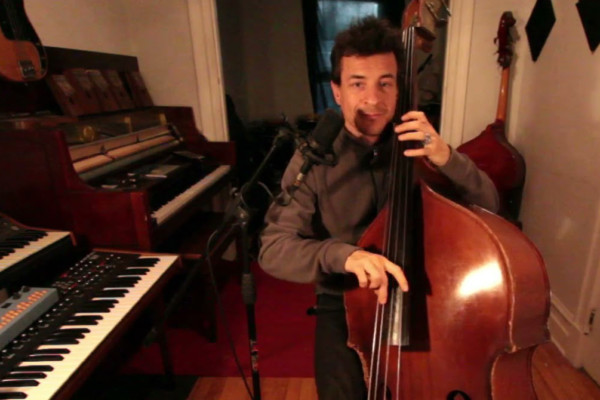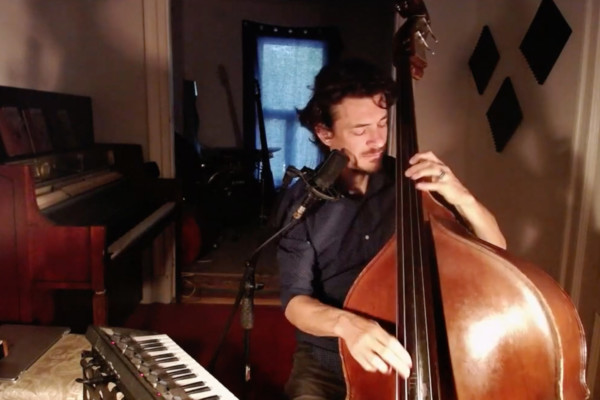The Lightbulb Moment: Give The Drummer Some

If you’re lucky enough to be on a gig where you have an opportunity to solo, then hooray! Congrats! You get a moment in the spotlight to express yourself! And it’s not just you that gets to solo; the bandleader sends the official look saying, “it’s your turn,” to the drummer as well.
Once you get over the initial excitement of taking a solo, it’s time to think practically about it. What do you play? How does the band support you? Why does everyone suddenly stop playing when someone in the rhythm section takes a solo? If you’ve never experienced the entire band coming to a halt at the moment you begin a solo, then consider yourself lucky. It’s an old habit, likely dating back to the early days of jazz and un-amplified upright basses, but it certainly dies hard. In an effort to treat the drummer a little bit better, or at least in the way that you’d like to be treated, it’s important to think about how to support their solo.
Consider the fact that music is interactive; the sum of the parts. When a melodic instrument, such as guitar, saxophone, or piano, takes a solo, you continue to support them in a way that encourages creativity. You establish a harmonic bed and interact dynamically in a way that allows them to be their best musical self. You keep the momentum going and the music flowing. There’s no reason why you can’t take a similar approach to support the drummer’s solo. And yet, people often don’t.
If you get an opportunity to play with a drummer in a situation where you know there will be solos, it may be worthwhile to be straight up and ask them, “how do you like to be supported during a solo?” Asking this question doesn’t mean that you don’t know what to do or that you aren’t capable of figuring out it; it does mean that you’re being courteous and conscientious of their needs.
Some drummers prefer to play a solo by themselves. They may even signal for everyone to drop out so that they have complete musical freedom. They’ll take the spotlight, play with different feels, and solo for an extended period of time.
Other drummers like the band to play hits or stabs during their solo. This provides just enough musical information to continue the form of the song and creates a musical outline that allows them to connect the dots. A common way of doing this is by hitting downbeats when the chords change; this approach is often taken when soloing over a blues progression. This method also makes it easier to complete the solo and usher in the rest of the band—if you’re maintaining the form of the song, everyone will keep track of the progression and it will be pretty obvious when it’s time to kick back into the song.
Another common approach involves providing a groove framework for the drummer to interact with. This tends to work best when a song vamps one or two chords or has a reoccurring lick or groove. You can play the lick or a variation of it, and the drummer plays off of the theme. If you create a variation, I recommend playing a short phrase that leaves plenty of space—perhaps the lick is played over the first two beats of a two or four-measure phrase. This provides plenty of time for the drummer to be showcased while you continue to serve as the musical anchor. Furthermore, it encourages musical interplay within the rhythm section. They may choose to match your groove, get creative over it while accenting the first or final note of the phrase, or drop out to create a conversational call and response.
Depending on the overall vibe of the gig and the length of the drummers’ solo, it may be appropriate to integrate all three of these approaches. The band may start out playing a groove framework, then drop out to give the drummer complete freedom, and then re-establish the chord progression to signal the end of the solo. If the drummer takes multiple solos throughout the course of the evening, perhaps you can try a different approach every time. The most important thing is that you continue to support the music, support the soloist, and keep the gig interesting when it’s time to “give the drummer some.”
Ryan Madora is a professional bass player, author, and educator living in Nashville, TN. In addition to touring and session work, she teaches private lessons and masterclasses to students of all levels. Visit her website to learn more!




At the start of a drum solo the other night, the entire band stopped. The drummer look at me and yelled “Where did the song go?” I jumped back in and he got to solo over the song and the effect was much more musical. If the arrangement is not set beforehand, keep playing the song unless the drummer makes it known they want it by themselves!